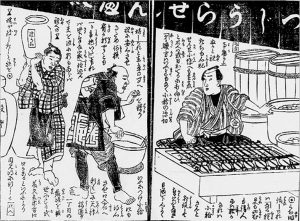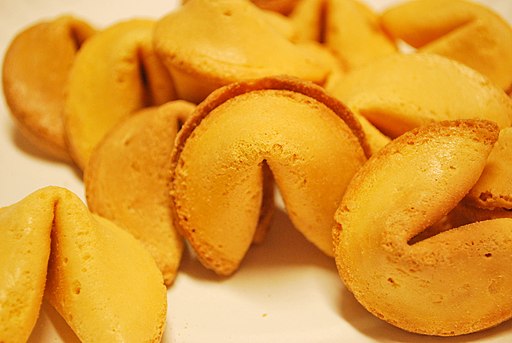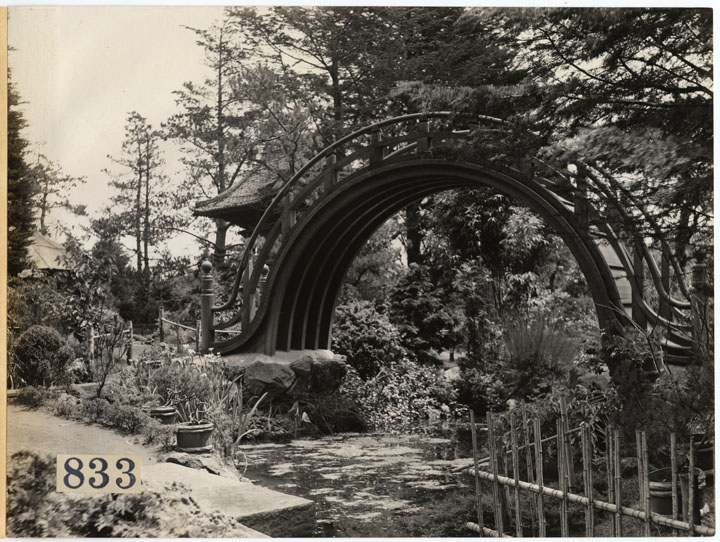The fortune cookie, that ubiquitous ending to a meal at Chinese restaurant, has traveled a long way from its origins — in Japan.

Long thought to be a Chinese American invention, the cookie is actually an Americanized version of a Japanese treat, according to Yasuko Nakamachi, a Japanese researcher. Nakamachi says the cookie is based on tsujiura senbei, a cracker (senbei) that’s crescent-shaped with a paper fortune tucked inside (tsujiura).
Although tsujiura senbei is made with sesame and miso rather than the butter and vanilla of “American” fortune cookies, it’s clear the two are related.
Interestingly, authentic Chinese cuisine has no such cookie in its pantheon of desserts.
How fortune cookies became staples in Chinese restaurants across America and other arts of the world is murky.
Many San Franciscans say it’s the man who establishes the Japanese Tea Garden in Golden Gate Park in 1894, Makoto Hagiwara, who introduces the cookie to the West. Hagiwara begins serving fortune cookies in the early 1900s, first with its original flavors of sesame and miso. Eventually, the recipe is changed to appeal to western tastes, and the cookie is lightened, sweetened, and flavored with vanilla.
But there are also Japanese bakeries in Los Angeles selling fortune cookies around the same time. One of the most popular, the Umeya Rice Cake Company, opens in 1918 in Little Tokyo. It closes nearly 100 years later in December 2017.
While there is no certainty where in California the cookies were first introduced, there’s abundant evidence showing the cookies turning up in chop suey restaurants in California in the 1920s and ’30s. Some of these restaurants are owned by Japanese Americans, who may be responsible for adding tsujiura senbei to the menus.
Popularity of the fortune cookie soars after World War II. Enlisted men returning from the Pacific Theater pass through San Francisco and receive cookies at San Francisco’s Chinese restaurants. When the soldiers return home they ask their local Chinese eateries why they aren’t being offered fortune cookies.
More than 3 billion fortune cookies are made each year, most in the United States, the New York Times reports.
TOP PHOTO: Fortune cookies, from Wikimedia.

